Physical Address
304 North Cardinal St.
Dorchester Center, MA 02124
In the paediatric skeleton the soft bone tends to bend and partially break (greater elasticity)
Greenstick fracture: the bone cortex and periosteum break on the convex side of a long bone only
Torus fracture: the bone cortex buckles on the concave side
Plastic bowing: a long bone bends, rather than breaks (multiple oblique microfractures are present) ▸ in the forearm, a non-bowed bone may fracture or dislocate
Injuries are graded according to the Salter–Harris classification (types I–V) ▸ injuries become more serious as the grade rises, with an associated risk of growth disturbance or avascular necrosis ▸ there is a worse prognosis within the lower limb than the upper limb
Types I and II: the epiphysis remains intact ▸ good prognosis
Types III and IV: the epiphysis is fractured ▸ poorer prognosis
Type V: a very rare crushing injury of the physeal cartilage ▸ it is usually associated with types 1–IV injuries
This is useful in planning complex fracture treatment
This visualizes the non-ossified growth plate cartilage, soft tissue or ligamentous injury (as well as the non-ossified epiphyses in very young children)
This is the most common elbow fracture in children ▸ it is a transverse fracture of the distal humerus (proximal to the humeral condyles)
A joint effusion (with elevated anterior and posterior fat pads) ▸ the mid-third of the capitellum is displaced posterior to the anterior humeral line
This is an avulsion injury (due to contraction of the forearm flexor muscles during a fall on an outstretched arm or an impaction injury from a fall onto the olecranon)
A medial condylar fracture extends to the trochlear articular surface (an epicondylar injury is extra-articular)
Valgus stress causes displacement of the medial epicondylar epiphysis inferiorly ▸ it may be associated with ulnar nerve injury
The presence of a trochlea ossification centre in the absence of a normally sited medial epicondyle ossification centre suggests that there is a displaced epicondylar fracture (with the displaced fracture overlying the joint space and mimicking a trochlea ossification centre) ▸ as the lateral epicondyle is the last ossification centre to appear, if there is a bone fragment adjacent to the lateral aspect of the distal humerus and it is not possible to identify the 5 other centres, a fracture must be present
Ossification order at the elbow (CRITOL): C apitellum, R adial head, I nternal (medial) epicondyle, T rochlea, O lecranon, L ateral epicondyle
‘Little leaguer's elbow’: chronic apophysitis around the medial epicondyle due to low energy repetitive traction forces
An undisplaced oblique fracture of the middle/distal tibial diaphysis in young children ▸ it may not be seen on an initial XR (perform delayed XR or scintigraphy – periosteal reaction + sclerosis)
This is not suspicious for NAI (in isolation) if the toddler is ambulant
Children's physes are more likely to fail than the ankle ligaments ▸ those of the distal tibia and fibula fuse at the same time (if only one is fused suspect an epiphyseal injury)
Triplane and Tillaux fractures tend to occur in adolescence around the time of distal tibial epiphyseal fusion ▸ CT is used for assessment prior to reduction
A Salter–Harris type IV epiphyseal injury: an oblique coronal fracture through the distal tibial metaphysis extending horizontally through the lateral part of the physis before running vertically through the epiphysis in the sagittal plane
Lateral XR: it appears as Salter–Harris type II fracture (due to metaphyseal extension)
AP XR: it appears as type III injury
A Salter–Harris type III injury due to avulsion of the anterior tibiofibular ligament: the fracture line runs through the anterolateral aspect of the distal tibial physis until it reaches the part that has fused, and then passes downwards through the epiphysis and into the joint ▸ no fracture component in the coronal plane (cf. triplane fracture)
As the majority of the epiphysis has already fused there is no growth arrest (but the fracture must be reduced to restore joint congruity)
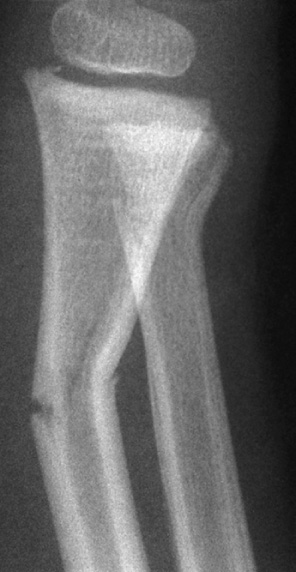
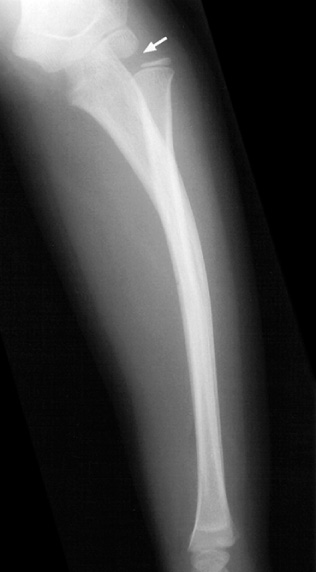
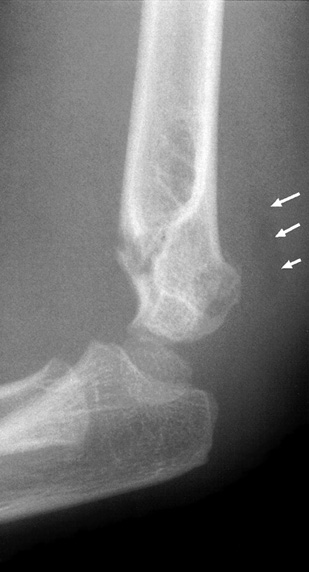
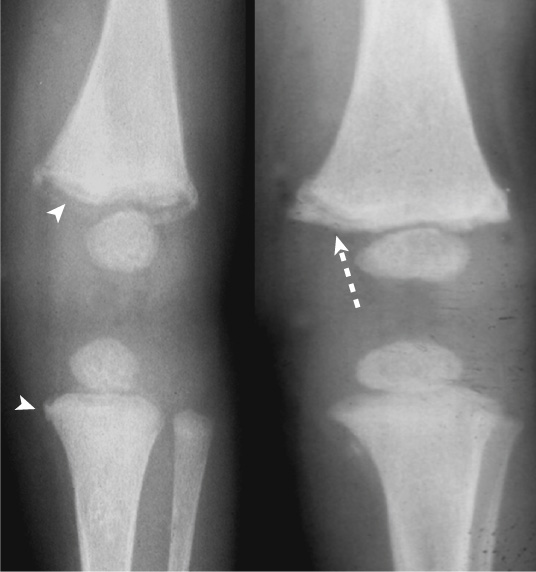

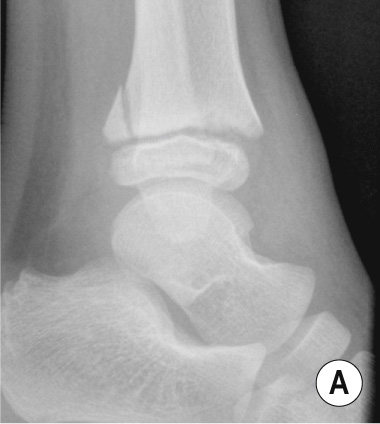
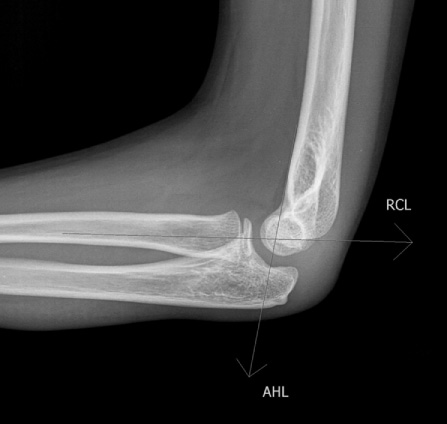
| The ossification centre for the internal (i.e. medial) epicondyle is the point of attachment of the forearm flexor muscles. Vigorous muscle contraction may avulse this centre. The most common injury mechanism is a fall on an outstretched hand. Avulsions also occur in children who are involved in throwing sports, hence the term “little leaguer's elbow”. When a major displacement of the internal epicondyle occurs the bone can become trapped within the elbow joint. This is a well recognised complication of a dislocated elbow, occurring in 50% of cases following an elbow subluxation or dislocation. A major avulsion is easy to overlook when an elbow has been transiently dislocated and then reduces spontaneously because the detached epicondyle may, on the AP radiograph, be mistaken for the normally positioned trochlear ossification centre. I before T. Though the CRITOL sequence may vary slightly there is a constant: the trochlear (T) centre always ossifies after the internal epicondyle. Therefore apply this rule: if the trochlear centre (T) is visible then there must be an ossified internal epicondyle (I) visible somewhere on the radiograph. If the internal epicondyle is not seen in its normal position then suspect that it is trapped within the joint. |
NAI : a spectrum of injuries due to child abuse ▸ this includes physical, sexual and emotional abuse
This ranges from vague minor symptoms to life-threatening shock
Oropharyngeal injuries : pharyngeal perforation may lead to a retropharyngeal abscess, mediastinitis, haemorrhage, or interstitial emphysema
A widened superior mediastinum
Become a Clinical Tree membership for Full access and enjoy Unlimited articles
If you are a member. Log in here